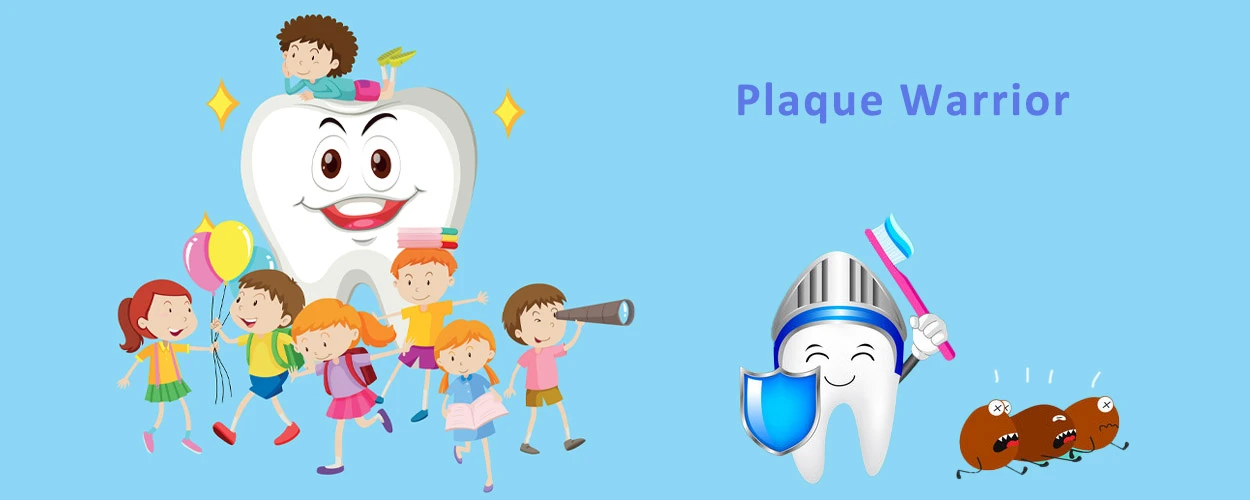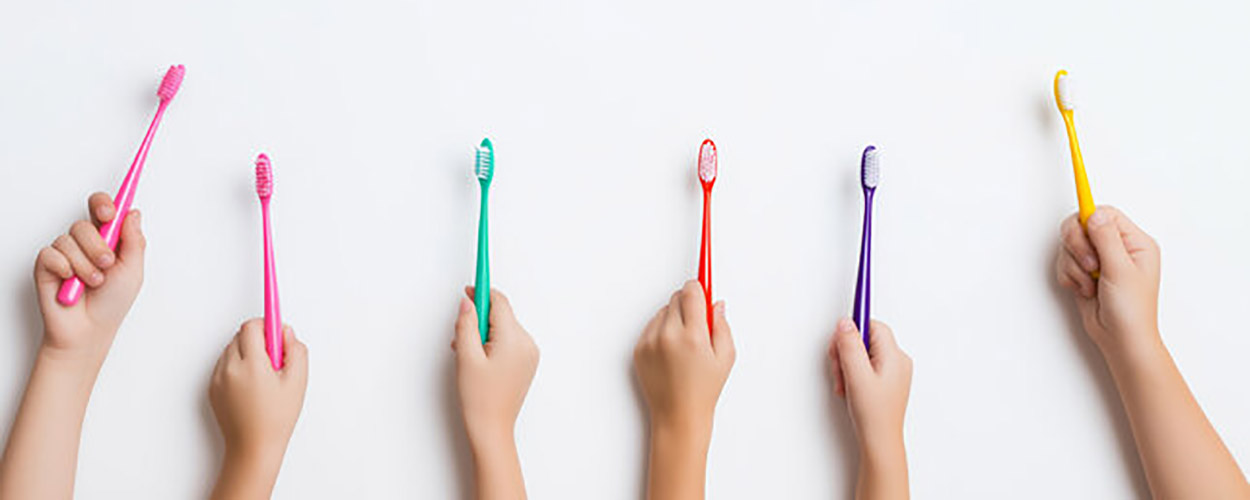Mundgesundheit ist eine kritische biologische Determinante für die pädiatrische systemische Entwicklung. WER Daten zeigen an 514 Millionen Kinder weltweit mit unbehandelten Karies im Grundgebäude anwesend. Frühe Kindheitskaries (ECC) stellt die am häufigsten vorkommende chronische Krankheit bei Kindern unter sechs Jahren dar. Dahinter, Es spiegelt Eltern wider’ kognitives Missverständnis und mangelnde Methoden in der mündlichen Bildung. In diesem Artikel, Ein pädiatrischer Zahnarzt, der seit mehr als zehn Jahren praktiziert.
1. Ernährungsintervention während der Schwangerschaft: Stärkung der angeborenen Grundlage der Mundgesundheit
Ab der 6. Woche der Fetalperiode beginnt die Bildung von Zahnkeimen. Die Aufnahme von Kalzium, Phosphor und Vitamin D während der Schwangerschaft wirken sich direkt auf die Entwicklung des Zahnschmelzes aus. Schwangeren wird empfohlen, täglich 1000 mg Kalzium zu sich zu nehmen (entspricht 500 ml Milch + 50 g Käse) und ihre Vitamin-D-Quellen erhöhen (wie Tiefseefisch und Eigelb können verzehrt werden). Klinische Studien haben bestätigt, dass der Vitamin-D-Spiegel von Müttern während der Schwangerschaft signifikant negativ mit der Häufigkeit von Zahnkaries bei ihren Kindern im Alter korreliert 6 (P<0.05).
2. 0-1 Jahr alt: Wichtige Hinweise für den Zeitraum der oralen Tastsensibilität
Nach der Geburt eines Babys, Zahnfleischmassage ist notwendig. Reinigen Sie es täglich morgens und abends sanft mit einer Silikon-Fingerbürste. Wenn das Baby Zähne bekommt 6 Monate alt kommen, Es wird empfohlen, das zu verwenden “Drei-Zonen-Reinigungsverfahren” : Teilen Sie die Mundhöhle in den linken bukkalen Bereich, der rechte Bukkalbereich und der Zungenoberflächenbereich. Berühren Sie mit einer 45-Grad-Winkelbürste den Zahnfleischrand und bürsten Sie jeden Bereich vorsichtig ab 10 Sekunden. Der Fokus liegt in dieser Phase nicht auf der Entfernung von Speiseresten, sondern auf die Etablierung neuronaler Reflexassoziationen.
3. Übersinnliches Training: taktile und geschmackliche gemeinsame Entwicklung
- Taktil: Verwenden Sie Silikon Aligner zweigt aus unterschiedlichen Texturen (Vorsprünge/Streifen/Wellen) um die Zahnfleischentwicklung anzuregen
- Gustatory: Führen Sie von Natur aus bittere Lebensmittel ein (Brokkoli/Grünkohl) nach dem Alter von 2 um die Abhängigkeit von süßen Lebensmitteln zu verringern
- Visual: Beobachten Sie die Verteilung von Zahnbelag mit einem UV-Bestrahlungsgerät
Fördern Sie das Kauen von Erkundungen und Plaque-Bewusstsein durch Rollenspielspiele wie “Plaque -Krieger” Während des Bürstens. UNS. Pädiatrische Verhaltensforschung zeigt, dass gamifizierte Routinen die Einhaltung der Einhaltung durch 73%.

4. Werkzeugwissenschaft: Werkzeuge bestimmen die Qualität der Gewohnheitsbildung
Zahnbürstenentwicklung: Verwenden Sie vor dem Alter Silikonmaterial 1, Wechseln Sie zu superweichen Borsten und Cartoon-Design 2 Zu 4 Jahre alt, und verwenden Sie elektrische Zahnbürsten erst ab einem Alter von 3 Jahren 5.
Fortgeschrittene Zahnpasta-Methode : Verwenden Sie im Frühstadium des Zahndurchbruchs fluoridfreies Gel. Nach dem Alter von 2, Übergang zu Kinderzahnpasta mit 500 ppm Natriumfluorid (Die Dosierung sollte auf die Größe eines Reiskorns abgestimmt sein).

5. Ernährungsuhr: Aufbau eines biologischen rhythmischen Schutzes
Formulieren Sie die “322” Ernährungsregeln:
- 3-Stundenintervall : Zwischen Hauptmahlzeiten und Snacks sollte ein Abstand von mindestens 3 Stunden liegen, um sicherzustellen, dass der Speichel das saure Milieu vollständig neutralisiert
- 2 Arten von Lebensmitteln, die Sie vermeiden sollten : Klebrige Lebensmittel (Gummibonbons, konservierte Früchte) und langanhaltende zuckerhaltige Lebensmittel (Lutscher, zuckerhaltige Getränke) sollten sparsam verzehrt oder ganz vermieden werden
- 2 wesentliche Gegenstände : Am Ende jeder Mahlzeit, Du kannst haben “erfrischende Lebensmittel” wie Apfelstücke und Selleriestreifen, Sicherstellung einer täglichen Aufnahme von 200 g ballaststoffreichen Zutaten
Beim Kauen von Äpfeln, Die Fasern reiben an der Zahnoberfläche, Dadurch können Zahnbelag und Speisereste entfernt werden. Experimente zeigen, dass kontinuierliches Kauen von Äpfeln die Zahnbelagsbedeckung um 15–20 % reduzieren kann. Rohfaser bildet a “Beseneffekt” beim Kauen, Reinigung der Rückstände zwischen den Zähnen und auf der Kaufläche . Der physikalische Reibungseffekt von Selleriefasern kann das Risiko einer interproximalen Karies verringern. Insgesamt 20 Tägliche Minuten Kauübungen können die Breite der Zahnbögen bei Kindern vergrößern (der Pont-Index steigt um 0.2-0.5) . Ballaststoffe adsorbieren kariogenen Zucker, Verkürzung der Zeit, in der freie Zucker mit der Zahnoberfläche in Kontakt kommen.
6. Positiver Anreiz: Anwendung des Belohnungsmechanismus
Erstellen Sie die “Zahnverteidigungskampf” Punktetabelle: Putzen Sie Ihre Zähne morgens und abends, um Geld zu verdienen 1 jeweils einen Stern, und Zahnseide richtig verwenden, um einen zusätzlichen Stern zu verdienen. Akkumulieren 10 Sterne, um Belohnungen wie Spielzeug und Gute-Nacht-Geschichten einzulösen. Neurologische Untersuchungen haben bestätigt, dass der Dopamin-Belohnungsmechanismus die Effizienz der Gewohnheitsbildung steigern kann 40%.

7. Feines Management während der Übergangszeit: Besonderes Augenmerk auf während der Zahnersatzphase
Ⅰ. Behandlung lockerer Zähne während der Zahnersatzphase
Sanftes Schütteln 10 Mal am Tag kann durch mechanische Stimulation die Osteoklastenaktivität beschleunigt und die physiologische Resorption der Zahnwurzel gefördert werden. Experimentelle Daten zeigen, dass regelmäßiges Schütteln den Zyklus des Milchzahnverlusts verkürzen kann 3 Zu 5 Tage . Mäßiger Druck kann die Aktivität von Osteoblasten im Alveolarknochen aktivieren, Schaffung eines besseren Knochenführungsraums für den Durchbruch bleibender Zähne.
Ⅱ. Zeitraum des dauerhaften Zahndurchbruchs
Verwenden Sie Silikon -Aligner -Kaubücher, um Gummi -Beschwerden zu lindern. Der Elastizitätsmodul von Silikonmaterial (0.5-1.5MPA) kann den Druck auf das Zahnfleisch präzise verteilen und Schwellungen und Schmerzen während der Eruptionsphase lindern. Die Wärmebilderkennung zeigte, dass der lokale Blutfluss nach der Anwendung um 35 % zunahm. Die wellenförmige Oberflächengestaltung des Zahnfleisches kann die Koordination der Kaumuskelgruppe verbessern und eine durch einseitiges Kauen verursachte Asymmetrie in der Entwicklung des Zahnbogens verhindern. Die hydrophobe Eigenschaft von Silikon in Lebensmittelqualität kann das Anhaften von Speiseresten verringern und das Auftreten von Zahnfleischentzündungen während der Eruptionsphase verringern. Plaque-Tests zeigen, dass der interproximale Plaque-Index nach der Anwendung um 23 % abnahm.
Ⅲ. Richten Sie eine ein “Zahnwachstumstagebuch” : Notieren Sie Zeit/Winkel/Farbe des Ausbruchs
8. Angst Eliminierung: Desensibilisierung für medizinische Szenarien
Ab dem Alter von 3, Kinder werden regelmäßig genommen, um ihre Eltern zu beobachten’ Zahnreinigungsprozess, um ihre Angst vor dem Unbekannten in Bezug auf Zahnuntersuchung und Behandlung zu beseitigen. Die klinische Praxis hat bewiesen, dass Kinder, die mehr als haben als 6 Zahnbesuche im Voraus haben 58% Mehr Zusammenarbeit mit der Behandlung.

9. "Periodische" Untersuchungen: Regelmäßige Besuche im Zahnarzt
Sobald die Angst Ihres Kindes vor Zahnuntersuchungen beseitigt wurde, Sie können den Zahnarzt regelmäßig mit Ihrem Kind besuchen. Es wird empfohlen, dass Ihr Kind den Zahnarzt alle sechs Monate bis ein Jahr für eine mündliche Prüfung und Reinigung besucht. Zahnärzte können sofort Probleme im Mund des Kindes erkennen, wie Zahnkaries, insbesondere frühzeitige Erkennung von Problemen wie Anti-Mandibular, tiefe Abdeckung, usw. Das Alter von 4-6 Jahre alt ist die goldene Periode für funktionelle kieferorthopädische Behandlung.

10. Eltern’ Kognitive Upgrade: zu beseitigen 5 Große Missverständnisse im gesunden Menschenverstand
| Primäre Zähne müssen früher oder später ersetzt werden | Verfallene primäre Zähne führen zu einer abnormalen Entwicklung von permanenten Zahnkeimen |
| Kein Fluorid ist sicherer | Eine mäßige Menge an Fluorid kann das Risiko von Zahnkaries durch verringern 25 Prozent |
| Hart zu bürsten ist der einzige Weg, um sauber zu werden | Übermäßiges Bürsten führt zu einer Zunahme der Inzidenz von keilförmigen Mängel |
| Zahnseide ist schädlich für Zahnfleisch | Richtige Verwendung kann entfernen 40% von benachbarter Plaque |
| Beratung ist nur erforderlich, wenn Sie Zahnschmerzen haben | Professionelle Fluoridanwendung alle 3 Monate sind wirksamer als die Behandlung |
Abschluss
Das moderne Mundgesundheitsmanagement der modernen Kinder hat in die Ära der „Präzisionsprävention“ eingetreten, Dies erfordert, dass Eltern die mehrdimensionalen Interventionstechniken von bio-psycho-sozialem Beherrschung beherrschen. Mundgesundheit ist ein wichtiger Bestandteil der allgemeinen Gesundheit. Die Pflege guter Mundgesundheitsgewohnheiten bei Kindern von in jungen Jahren ist nicht nur ein Weg, um Kinder einen Schluck gesunder und schöner Zähne zu haben, aber auch eine Möglichkeit, ihr helles Lächeln für Jahrzehnte zu schützen.


